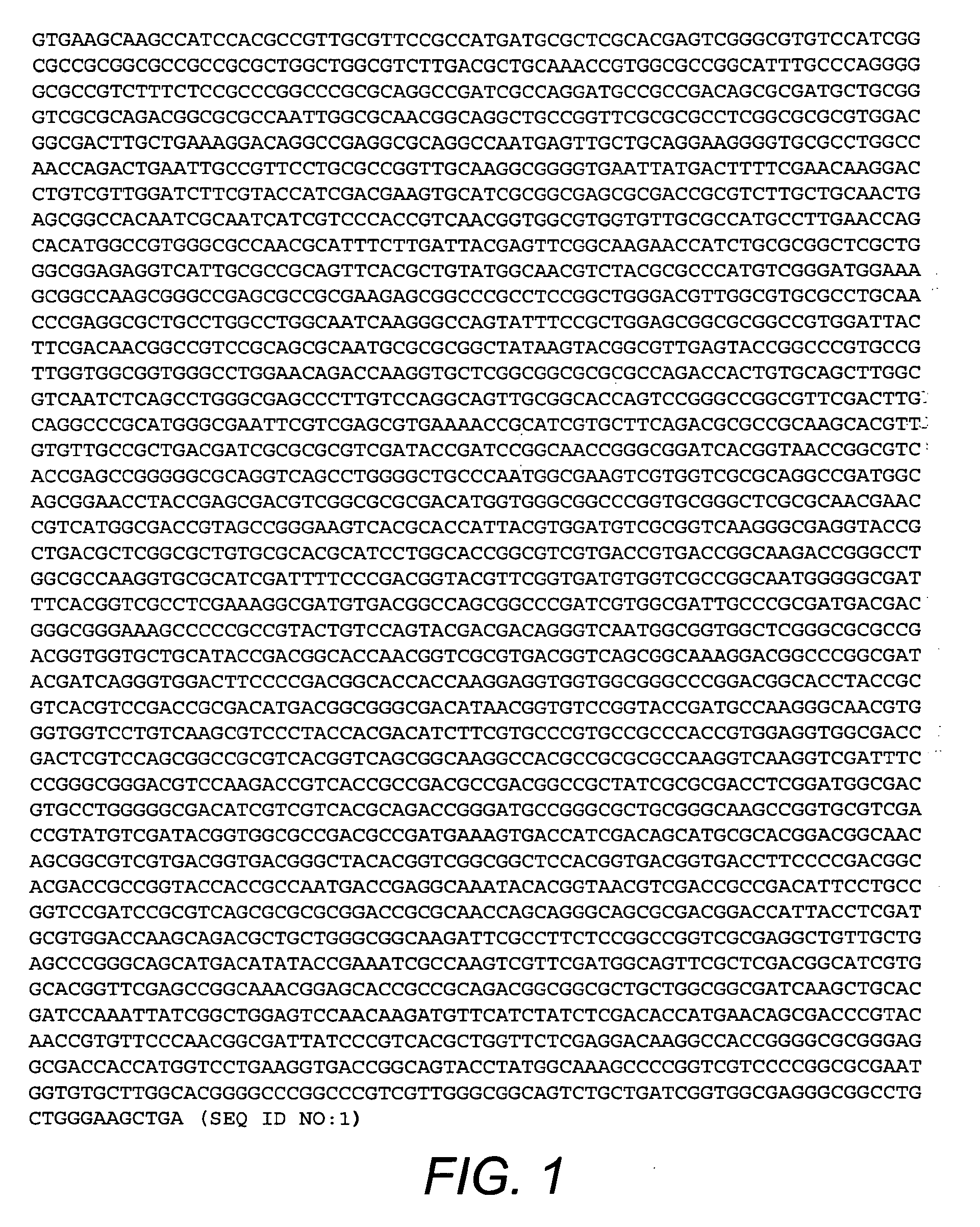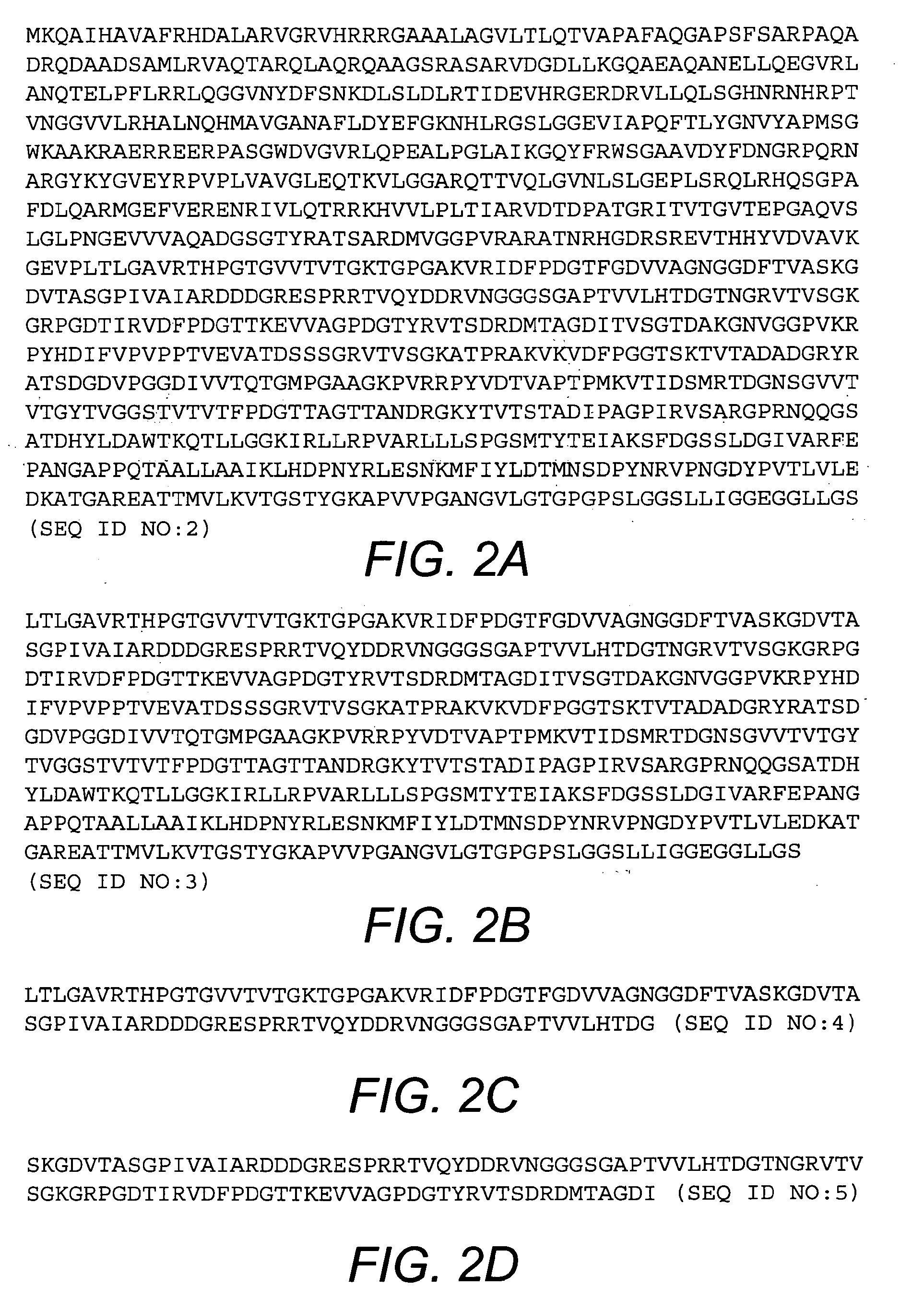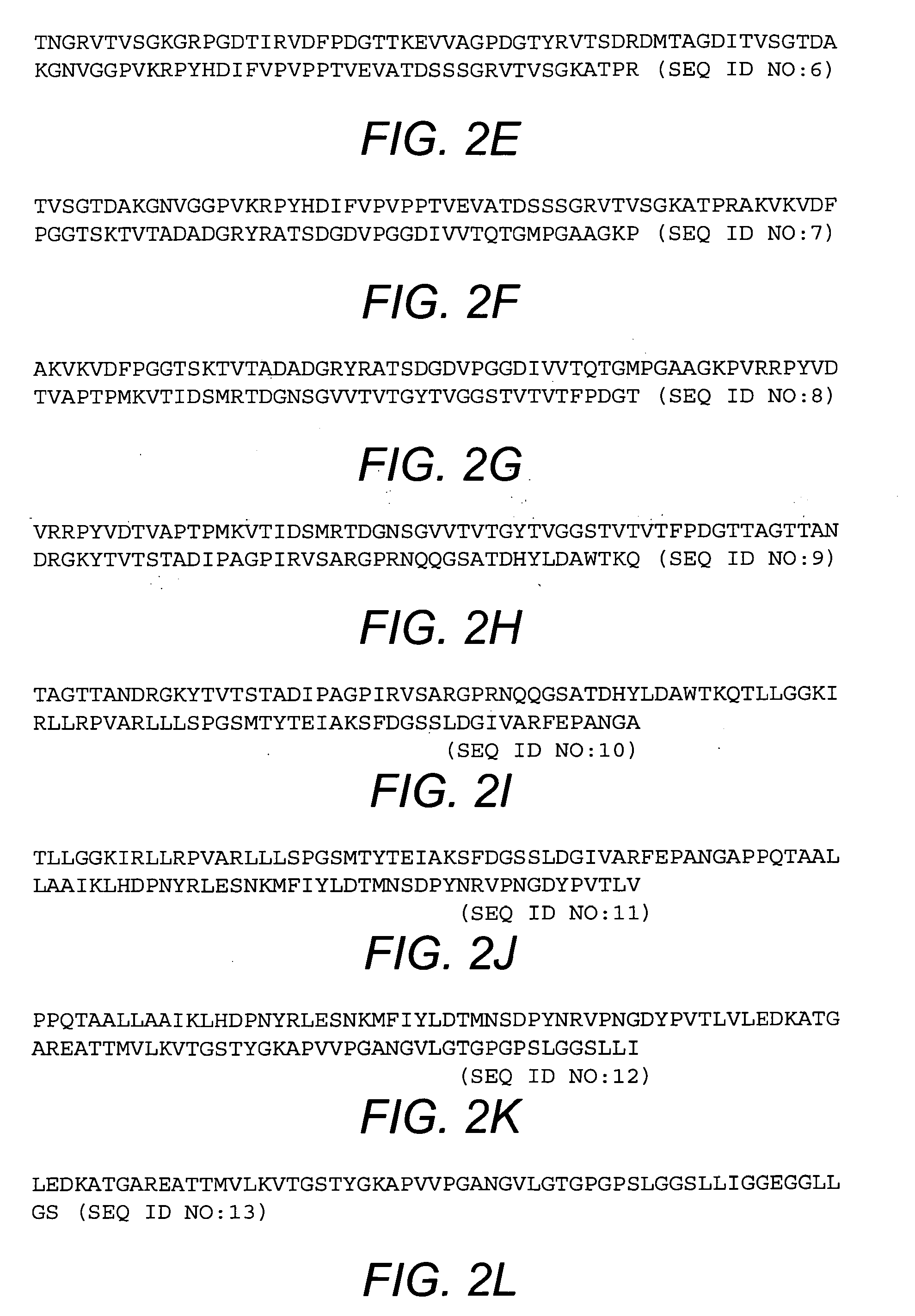Bordetella outer-membrane protein antigens and methods of making and using the same
a technology of outer membrane protein and antigen, which is applied in the field of antigens and formulations, can solve the problems of acellular vaccines, although effective against severe symptoms, not particularly effective in preventing carrier states, and snuffling among herds, etc., and achieves the effect of raising anti-sera
- Summary
- Abstract
- Description
- Claims
- Application Information
AI Technical Summary
Benefits of technology
Problems solved by technology
Method used
Image
Examples
example 1
Passive Immunization
[0045]Groups of five C57 / BL6 mice were separately injected intraperitoneally with 200 μl of sera harvested from wild-type inoculated rats, BcfA-specific polyclonal serum, preimmune sera or sterile phosphate-buffered saline (PBS). Three to four hours after inoculation, these mice were intranasally challenged with 5×105 colony forming units (cfus) of wild-type B. bronchiseptica strain RB50 in a 25 μl droplet. Seven days post-inoculation, mice were sacrificed and trachea, nasal septum and lungs were harvested in sterile PBS and homogenized. Colonization of these organs was quantified by plating different dilutions of the homogenate in BG blood plates containing 50 of streptomycin and subsequent colony counting. The results of this analysis indicated that anti-serum raised against BcfA was able to protect mice against subsequent challenge with B. bronchiseptica.
example 2
BcfA Epitopes
[0046]The purified BcfA protein migrates in an SDS-polyacrylamide gel at a mobility corresponding to ≈100 kDa, which is consistent with the annotated length (969 amino acids; FIG. 2A) of the BcfA open reading frame. BcfA displays homology to other bacterial proteins including BipA from Bordetella, invasins from Yersinia, and intimins from enteropathogenic E. coli. Based on the known structure of these proteins, the C-terminal 508 amino acid residues of BcfA are expected to encompass the extracellular region of BcfA and thus will interact with the immune system. Accordingly, amino acid residues 461-969 of BcfA (SEQ ID NO:3; FIG. 2B), or one or more fragments thereof, are expected to elicit an immune response against B. bronchiseptica. Exemplary fragments of BcfA are shown in FIGS. 2C-2L.
[0047]Additional fragments of BcfA include antigenic regions of the BcfA extracellular domain as well as fragments expected to bind to major histocompatibility complex (MHC) class I and M...
example 3
[0049]FIG. 3 shows that Immunization with BcfA protects mice against B. bronchiseptica challenge. Mice were immunized intraperitoneally at 0 and 3 weeks with either 10 or 30 μg of BcfA adsorbed to alum or alum only. One week after the second immunization, mice were intranasally challenged with 5×105 CFU or RB50 in a 25 μl volume. Mice were sacrificed at 1 day (FIG. 3A) and 6 days (FIG. 3B) post-challenge and the number of CFU was determined in the nasal septum, trachea and lungs. Individual symbols represent a single mouse. The dashed line represents the lower limits of CFU detection. Black bars represent mean colonization of respective groups. A statistical analysis was carried out using an unpaired two-tailed Student t test. The asterisks indicate the range of the different P values (one asterisk, ≦0.05; two asterisks, ≦0.005 and three asterisks, ≦0.0005).
[0050]The foregoing is illustrative of the present invention, and is not to be construed as limiting thereof...
PUM
| Property | Measurement | Unit |
|---|---|---|
| Length | aaaaa | aaaaa |
| Immunogenicity | aaaaa | aaaaa |
| Antigenicity | aaaaa | aaaaa |
Abstract
Description
Claims
Application Information
 Login to View More
Login to View More - R&D
- Intellectual Property
- Life Sciences
- Materials
- Tech Scout
- Unparalleled Data Quality
- Higher Quality Content
- 60% Fewer Hallucinations
Browse by: Latest US Patents, China's latest patents, Technical Efficacy Thesaurus, Application Domain, Technology Topic, Popular Technical Reports.
© 2025 PatSnap. All rights reserved.Legal|Privacy policy|Modern Slavery Act Transparency Statement|Sitemap|About US| Contact US: help@patsnap.com



